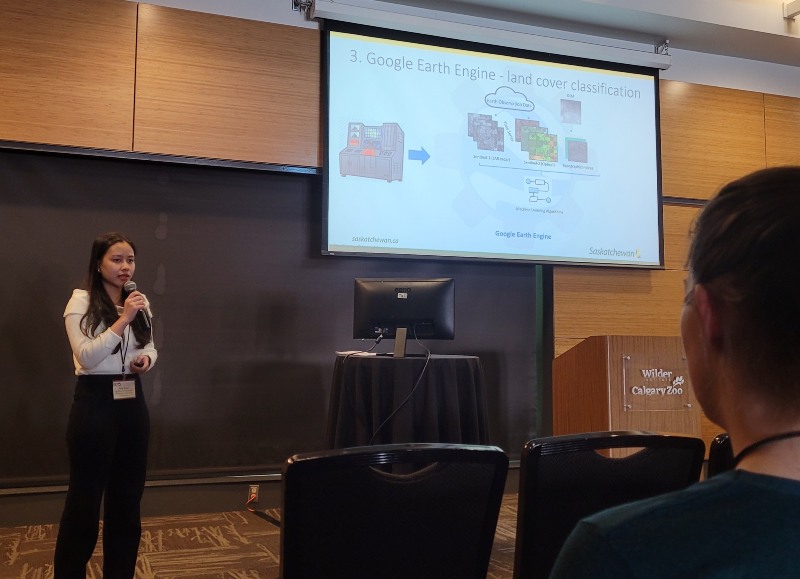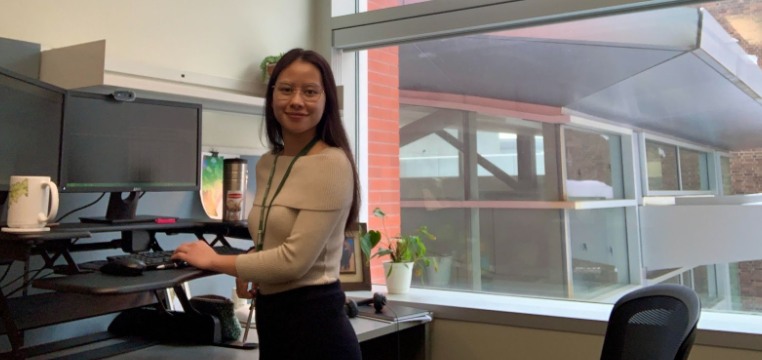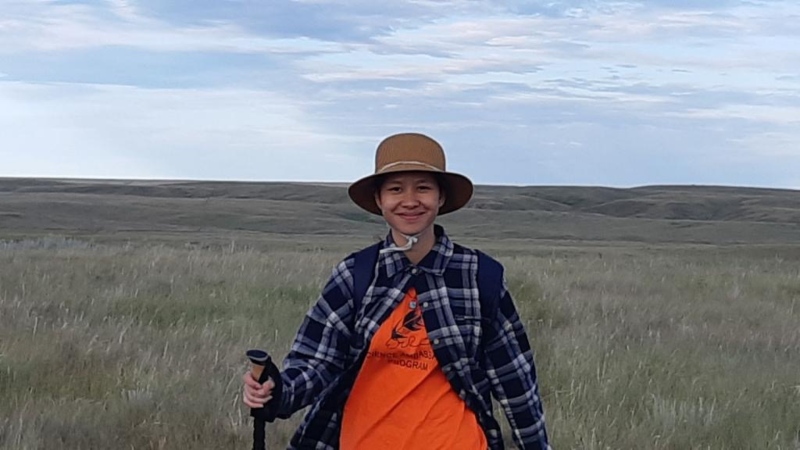February 11 is the International Day of Women and Girls in Science. To celebrate, we are sharing an interview with Thi Minh Thuy Doan (or Thuy, pronounced “Twee”), a Geospatial Data Scientist who has supported our organization with her experience, expertise, and dedication. We asked Thuy to share insights about her professional journey, research interests, and advice for women interested in a similar career path. We are inspired by her hard work and the legacy that she is leaving for future scientists.
—————
Read along for Thuy’s story in her own words:
Thuy, can you tell us about your journey to becoming a Geospatial Data Scientist?
My childhood memories are filled with travels with my late grandfather who inspired my love of nature. I pursued a bachelor’s degree in Natural Resources Management (the only one in my high school class) because I believe this major deserves better attention from youngsters and we can’t manage natural resources well without understanding their historical and current conditions. One of my instructors showcased how powerful remote sensing and GIS technology are in telling stories about Mother Nature both spatially and temporally. So, I decided to become a part of this geospatial world in my second year. Being in this world has brought me wonderful experiences; from wallowing in the mud to conducting fieldwork in the coastal mangroves in northern Vietnam, to being close to Plains Bison in order to measure how much forage is available for them in Grasslands National Park.

Thuy presented her Prairie Landscape Inventory work at the 2023 Prairie Conservation & Endangered Species Conference, Calgary.
Why did you decide to apply to the ABMI?
I’ve been following ABMI’s social media for a long time and was impressed by the amount of field data that the Monitoring Centre technicians collect every summer. Through the ABMI-hosted online workshops, I learned about the Geospatial Centre’s work such as the Wall-to-Wall Human Footprint Inventory layers and the ABMI Wetland Inventory using cloud-based Google Earth Engine (GEE). The Earth Observation Insight team is a group of experts whose projects influenced my Prairie Landscape Inventory work at the Government of Saskatchewan where I developed a method to map native grassland using machine learning algorithms in the GEE platform. These made me want to become a part of this amazing team.
Can you tell us about your research interests and your work at the ABMI?
My research interests are grassland ecology and conservation—but not limited to grasslands. I enjoy my research here at the ABMI as a geospatial data scientist and my work involves the development of a global algorithm for remotely sensed images to map algal blooms in Alberta freshwater lakes. I support the development of the ABMI’s Wetland Inventory in which we aim to classify wetlands up to the ‘form’ level.

Thuy at her favorite working station.
What do you enjoy most about your area of work?
I’m thankful and proud to work in this field because I can see the value and potential contribution of my work to society. Recently, I published a paper in Rangeland Ecology & Management addressing the question: How many Plains Bison can graze sustainably inside the confined settings of the Grasslands National Park? The paper focuses on a proposed novel method to inform the Plains Bison’s carrying capacity by integrating the Bison resource selection function and remote sensing-based forage estimation. Read more in Thuy’s paper: Resource Selection Function-Adjusted Carrying Capacity Informs Bison Conservation Management in the Imperilled Mixed Grassland Ecosystem.) This work supports decision making for the management of a Plains Bison conservation herd in Canada and can be reproducible to inform the conservation of multi-species at risk habitat.
What is it like being a woman at the ABMI?
I am grateful to be an ABMI-er because my colleagues are always enthusiastic and supportive with sharing and exchanging knowledge. I always feel encouraged to learn and grow both personally and professionally. As a woman here, I do not doubt the management team’s support if I have any family issues, and I truly appreciate this.
Do you have any advice for other women considering a career as a Geospatial Data Scientist?
Whether you are considering pursuing this career path now or you are already on it, my recommendation is to be humble and always be open to learning new skills and coding languages. It’s helpful to set goals for yourself in the short and long term. If you are determined and work hard, you will then find yourself shining on stage like Félicie in one of my favourite movies, Leap/Ballerina.

